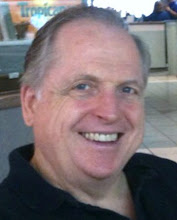"For a boy with a shinny new hammer, all the world looks like a nail." "If we have only one tool in our toolkit, while we may find creative new applications for that tool, we won't be able to do what we could if we had more appropriate tools for the requirements of the job."
In the early days of America, shortly before the Revolutionary war of 1776, many jobs were based on the master-apprentice model prevalent in Europe. A boy would be apprenticed to a trade. The owner would be a "master" craftsman and there would be other stages including journeyman and down to the level of apprentice. Variations on this model still exist today, including a popular concept of an "internship."
One of the purposes of such a model for acquiring professional skill over time was to have a wide variety of work experience allowing the learner to develop a repetoire of skills and tools with which to approach the professional challenges the learner would experience. The apprenticeship model also allowed people to move through the personal performance change curve (see slide 8).
In sales, many people rely on scripts developed to allow more junior sales personnell to cover key aspects of a sales transaction. When someone is obvious in using a script when trying to make a sale, the person who may be buying may be put off by the script. On the other hand, in professional management training, checklists are often used to make sure that managers follow the key steps in managing the appropriate interaction. While some employees may not like that their manager follows a script, others have claimed in the past, "Please follow the checklist. You are a much better manager now that you have one to follow."
That could be true for sales people and sales scripts as well.
Consultants, doctors, lawyers, teachers, pizza chefs, and many other professionals are expected to develop by practicing over time and by becoming reflective practitioners (learning by reflecting on their experience and improving their performance and outcomes).
Often someone comes up with a good idea that everyone likes and trys to implement. Peter Senge and the Fifth Discipline had a major impact on the consulting world. Malcolm Gladwell (The Tipping Point, Blink, Outliers) and Michael Gerber (eMyth Revisited) are both popular authors whose books have inspired many consultants and many follow-up ideas. Eliyahu Goldratt (The Goal, Critical Chain) has developed a series of books and concepts and teaches consultants to work with a Process of Ongoing Improvement ("Poogi").
Professional consultants can benefit from all of these authors and need to integrate relevant tools into their professional toolkits so that they can bring out the most appropriate tool for the situation in which they find themselves.
A problem with consulting firms with massive teams of consultants is that most of the consultants were university trained and focus on relatively low-complexity tasks. The firm brings a wide variety of resources with multiple consultants with varying seniority to meet the challenges of their clients.
When someone works with a smaller consulting firm, the consultant needs to be more flexible, with a solid background of expertise and a network of professional contacts who can be called on to supplement the consultant's skills and tools as needed.
LinkedIn is a good social network for consultants to connect with peers. Sometimes consultants with websites provide links to others in their personal network and sometimes contracts are written so that networked consultants can be brought-in on appropriate pieces of client work.
These ideas are all part of evolving the concept of developing professional competence in the 21st Century.
Subscribe to:
Post Comments (Atom)




No comments:
Post a Comment
Thanks for your comments. They will appear on the blog shortly.